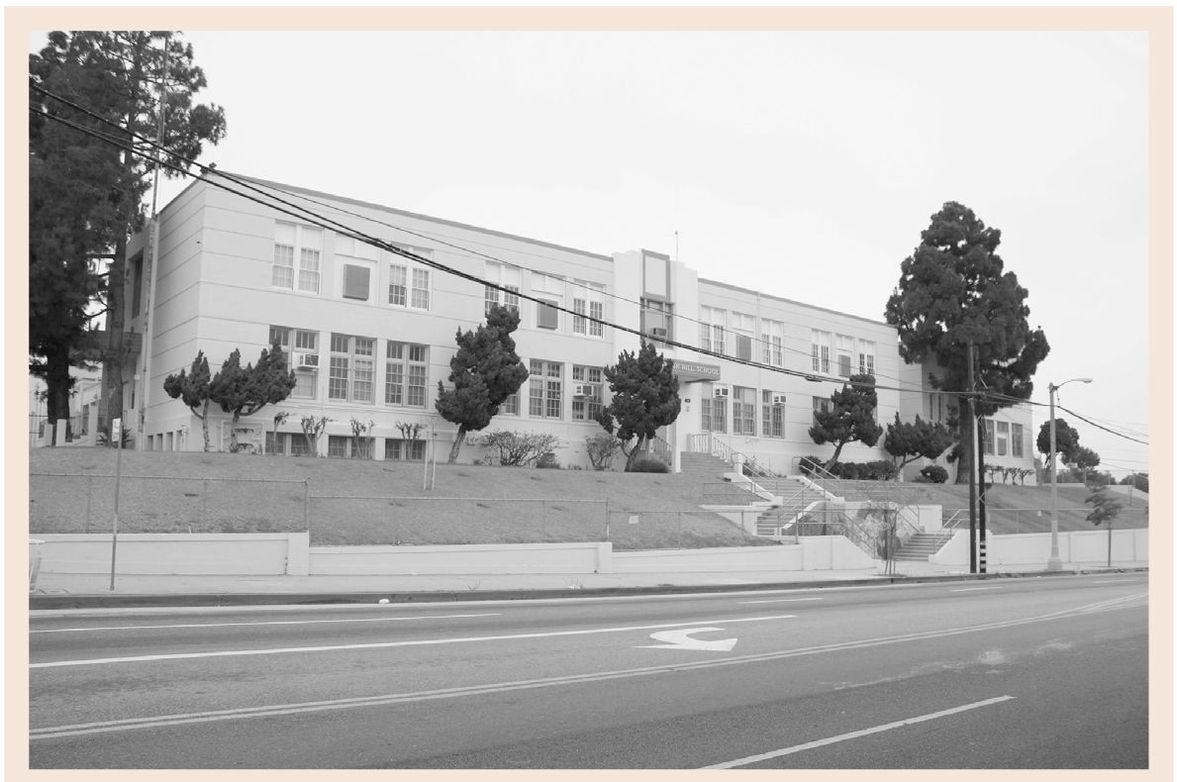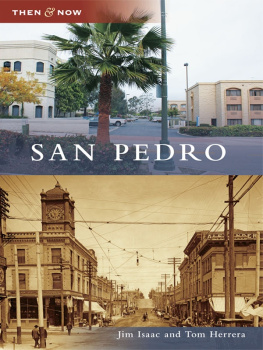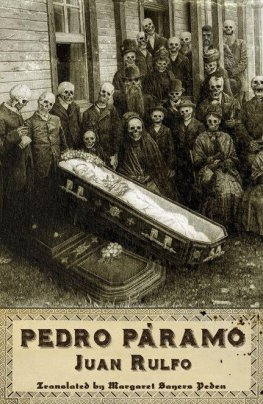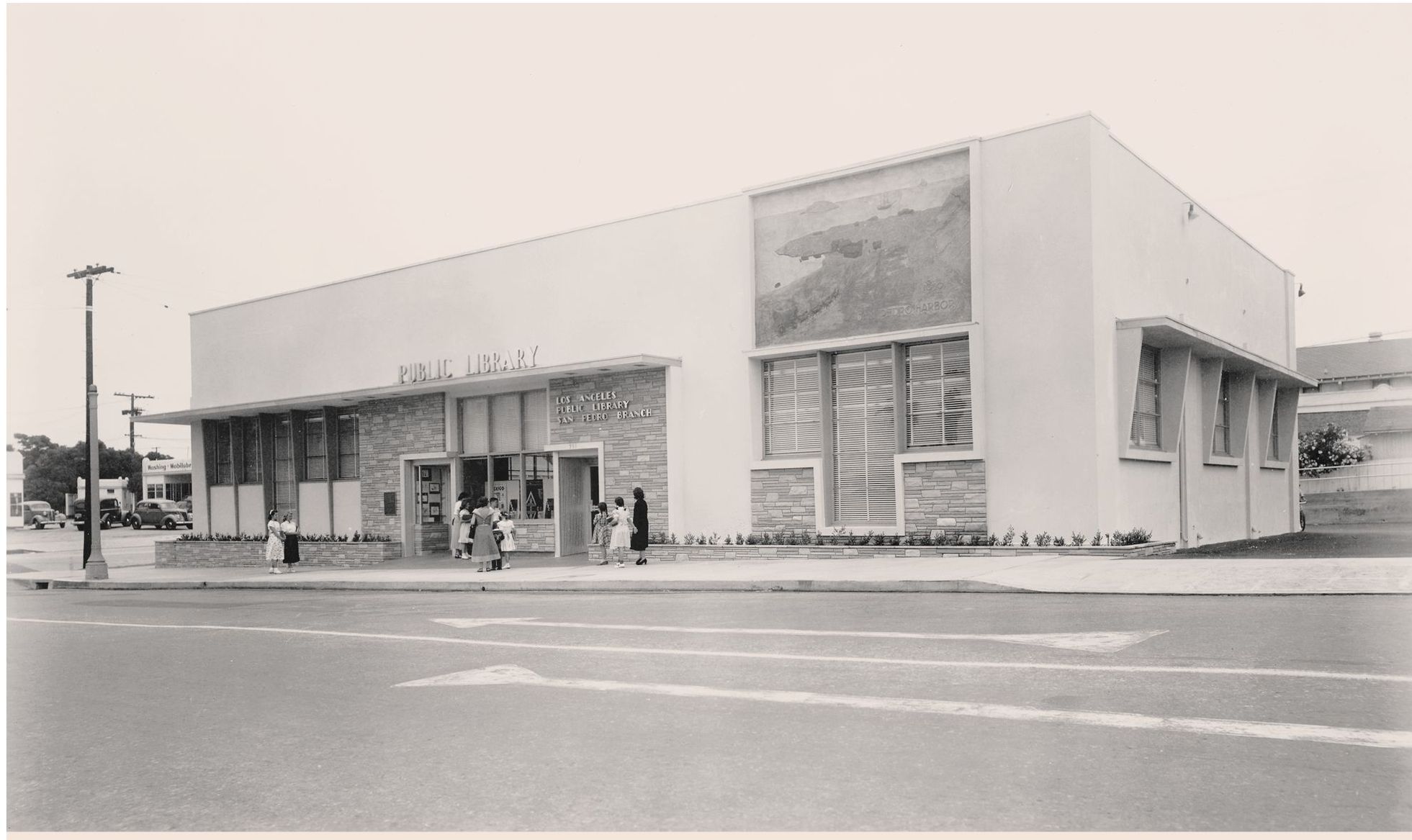ACKNOWLEDGMENTS
Acknowledgments of those who helped with the writing of this book must start with a vigorous thank you to Joe McKinzie, president of the San Pedro Bay Historical Society. His Arcadia book, Postcard History Series: San Pedro , was the genesis for this project. San Pedro Then & Now was originally only meant to be a multimedia presentation based on Joes book for a fourth-grade class, but somehow it took on a life of its own and became a book.
The San Pedro Bay Historical Society made this book possible. With the expert assistance of the head archivist, Anne Hansford, the societys extensive collection of vintage photographs, newspaper clippings, and publicationssuch as Kathryn Schultzs San Pedro Public Schools were invaluable resources. Al Bitonio was particularly helpful when it came to navigating through old maps and pinpointing locations where photographs were taken. Thank you to them and other society volunteers.
The outstanding cooperation of Seaside Pharmacy management is gratefully recognized for supplying vintage photographs and information. The staff of Los Angeles councilwoman Janice Hahns San Pedro field office deserves thanks for making it possible to take the now photograph of the municipal ferry building that appears in this book. A volunteer at the Los Angeles City Fire Department San Pedro Museum located in old Fire Station 36 at the municipal building was helpful in tracking down the location of old Fire Boat House No. 1.
Stephanie Williams deserves our recognition for assisting and putting up with us on some of our photograph shoots. It wasnt easy.
The Port of Los Angeles was kind in supplying us with a brief history of San Pedro and the Port of Los Angeles.
For guiding us through the maze of writing and putting together this book, our hats are off to Jerry Roberts, our editor.
Finally Brenda HerreraToms mothergets a thank you. It was her firmly asking us, Why dont you guys write a book? one day two years ago that probably motivated us into seriously thinking about this project.
To all those mentioned, thanks a million!
Unless otherwise credited, then photographs were used courtesy of San Pedro Bay Historical Society.
All now photographs were taken by Tom Herrera and Jim Isaac.
Find more books like this at
www.imagesofamerica.com
Search for your hometown history, your old
stomping grounds, and even your favorite sports team.
CHAPTER 1
SCHOOLS, CHURCHES, AND LIBRARIES
Educational, spiritual, and intellectual institutions are very important and major factors in the history of San Pedro. Some of the oldest schools, churches, and libraries in Southern California are located in the harbor community. Pictured is San Pedros third library, completed in 1948 on the corner of Gaffey and Tenth Streets. It replaced the brick library building that stood on this lot since 1924 but was condemned as unsafe in 1943. The 1948 library has since been demolished and replaced with a modern, larger facility completed in 1983.
The photograph below shows the 1919 brick building that replaced a wooden schoolhouse that had been on that site since 1885. Fifth Street School was San Pedros first public school located between Fifth and Sixth Streets on Centre Street. By the late 1920s, San Pedros central business district surrounded the school. It was thought that the area was not the best environment for students. The school was demolished in 1927. The school built to replace it, Cabrillo Avenue School, opened that same year. A Los Angeles superior court building is presently located on that property.

Sixteenth Street School has a unique place in the history of San Pedro schools. During the earlier years of the schools existence, it accommodated children in grades kindergarten to high school. High school classes were conducted on the upper floor of the building from 1903 to 1905. The original wooden structure of the Sixteenth Street School was totally destroyed by fire in June 1922. Classes were held in tents until a new permanent structure was available. Some of the main structures of the present-day school are what replaced the fire-damaged wooden building. The name of the school was changed from Sixteenth Street School to Fifteenth Street School for the simple reason that when San Pedro was incorporated into Los Angeles in 1909, the Los Angeles School District already had a Sixteenth Street School. Present-day Fifteenth Street School is on the schools original site, and since the demolition of the Fifth Street School, it is the oldest operating school in San Pedro.

To meet the needs of San Pedros growing population, a school was erected on land in an area known as Barton Hill (named after past San Pedro postmaster Alberta Barton). The school was built in 1905, as seen in the postcard above postmarked 1919. By 1917, it was decided a larger school was needed. That building stands on the site today. It was not damaged during the 1933 Long Beach earthquake, but as a precaution, children attended classes in tents and bungalows until certain structures on the building were removed. The building was reinforced and covered with stucco. Except for a few alterations, present-day Barton Hill School looks much the same as it did after the 1933 renovation.

Point Fermin Elementary School was the first new school built since San Pedro was incorporated into Los Angeles in 1909. A portable bungalow was the schools first building when it opened in 1912. Growing enrollment and the necessity to teach more than three grades prompted the purchase of more land in 1919 for a larger, permanent building. The present-day, two-story brick building opened in 1922. This school was heavily damaged in the 1933 Long Beach earthquake. Students attended half-day sessions in tents until renovation was completed. The major structures of the school have not changed much in its 1933 renovation. Point Fermin school is the fourth oldest school in San Pedro, preceded by Fifth Street, Sixteenth/ Fifteenth Street, and Barton Hill schools.























